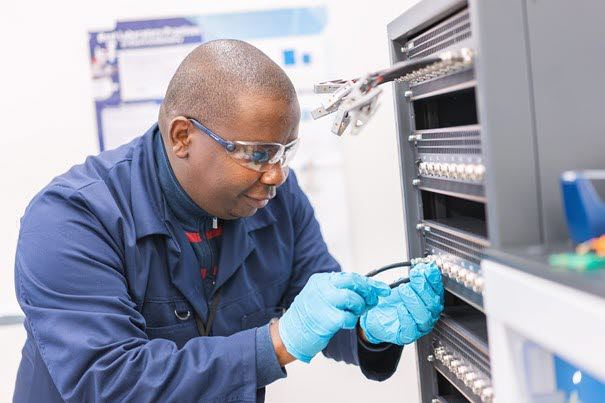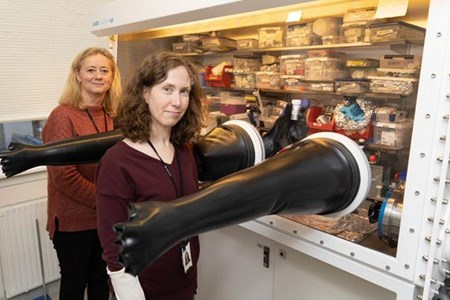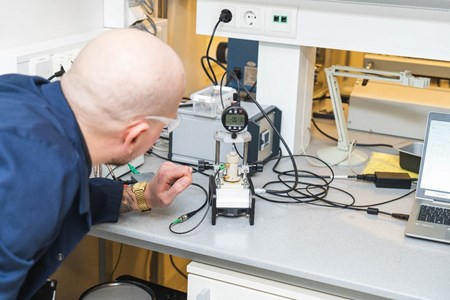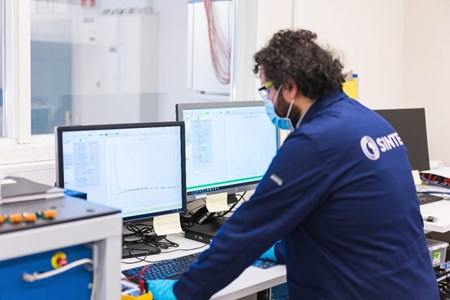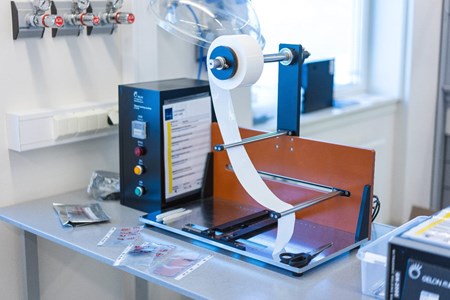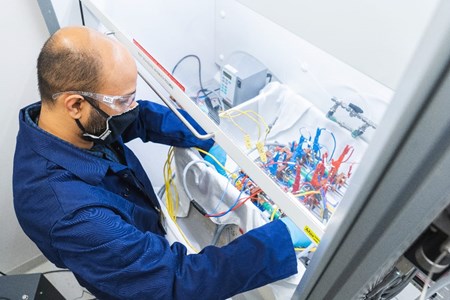Together, we have electrochemical characterisation equipment from the following manufacturers:
- Maccor
- Biologic
- VMP3
- VMP300
- BCS815
- BCS805
- Metrohm Autolab
- LANDT CT2001A
- PEC ACT0550
Our joint facilities have a total of 450 test channels for small and medium size battery cells, 20 potentiostat channels for advanced characterisation as well as 28 channels for big pouch format cells.
A total of four gloveboxes are available for use within the lab, 2 double boxes and 2 single boxes.
Besides testing capabilities, our battery lab is equipped with state-of-the-art ink blending facilities such as overhead blenders, ball mills, high speed mixers and a centrifugal vacuum mixer. We also host rheometers for slurry and ink analysis. In addition, we have advanced test cells for electrolyte studies by RHD Instruments, as well as an Ofelia test cell to analyse thickness changes of solid-state electrolytes or electrode materials in operando (electrochemical dilatometer).
Additionally, SINTEF has recently acquired the capability to produce laboratory grade pouch cells on a newly installed bench top pouch cell line. The pouch line consists of the following equipment:
- Electrode cutting machine - With two sets of cutting dies of different sizes enabling the precision cutting of cast anode and cathode electrodes.
- Z stacking machine enables the stacking of the cathode, separator, and anode layers into a stack with the separator zigzagging between the electrode layers.
- Tab welding machine - At this station, the tabs of aluminium or copper forming the positive or negative terminals of the battery are welded together ultrasonically.
- A pouch case former shapes the double laminated aluminium sheet into a rectangular casing with a defined thickness. This casing will then host the stacked layers up to the specified thickness of the mould.
From this stage the electrode and separator stack are inserted into the laminated aluminium pouch and heat sealed on three edges. The open pouch cell is dried under vacuum at a predefined temperature and transferred to an argon filled glovebox. Here the tailor-made electrolytes are inserted to the cell before it is vacuum sealed. Afterwards, the cell undergoes a formation step involving charging and discharging using specific parameters unique to the cell chemistry. During this step, the crucial interphases (SEI and CEI) form which result in a certain amount of gas formation. The pouch cell has an extra cavity which allows for this swelling. - Final vacuum sealing station – Here the swollen battery is punctured to degas the cell under vacuum. Then it is precision resealed to the exact cell dimensions of the finished product, now recognizable as a pouch battery cell.
Photo: Edvin Wiggen-Dahl / SINTEF

